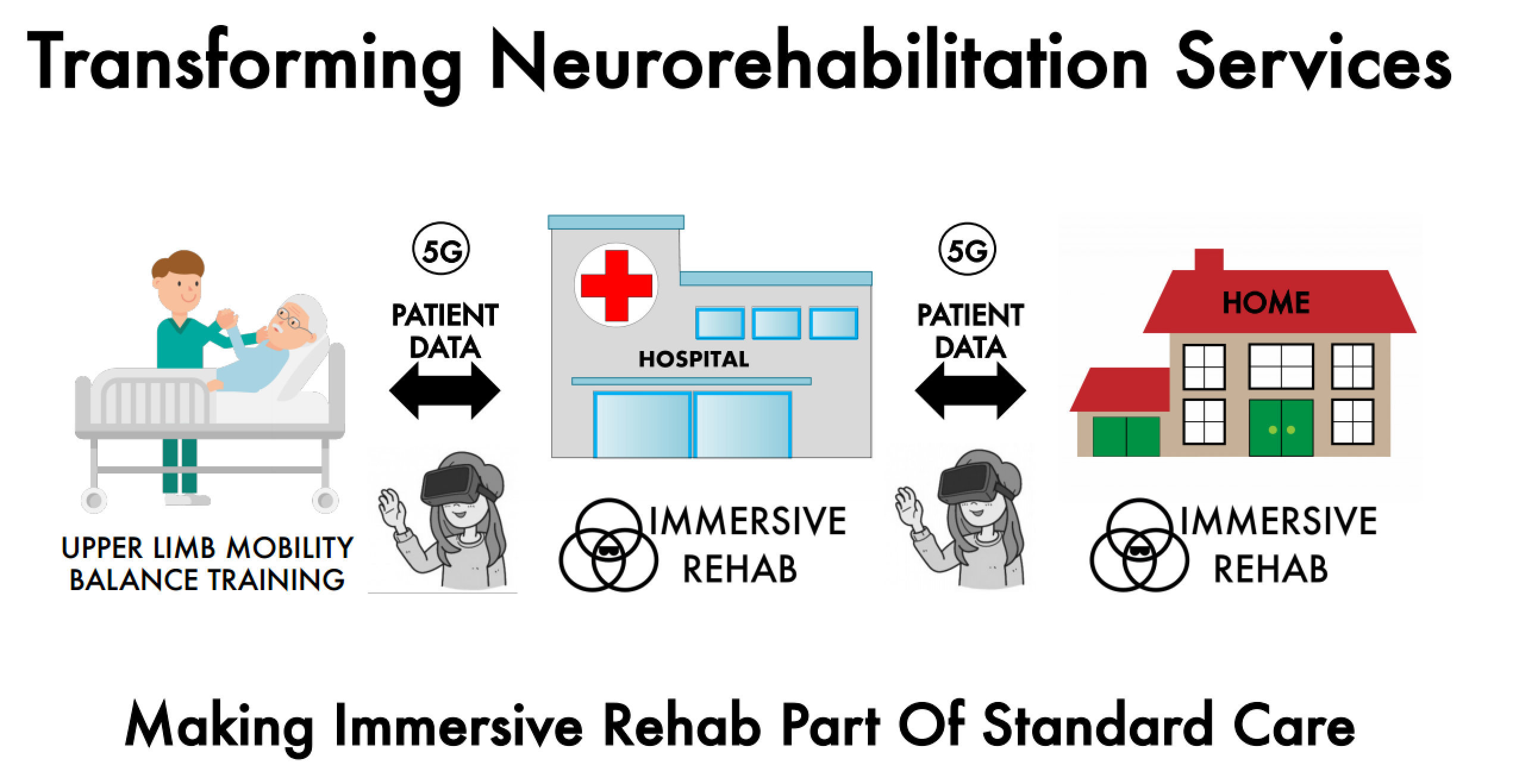Immersive Rehab creates interactive & engaging digital neuro-rehabilitation programmes in virtual reality with the aim to improve patient recovery and enhance patient assessments. The goal is to increase the effectiveness of neurorehabilitation, to reduce referral times, to make rehab fun and engaging, and to have a better patient outcome.

Immersive Rehab is all about improving the outcome for patients going through neurorehabilitation and giving them more of their independence back. Physical and neurorehabilitation is often not an accessible, engaging and motivating activity to embark upon and engagement with and long term compliance can be a limiting factor in relation to treatment success. Stroke patients and people with limited mobility in upper limbs for example often cannot engage with physical objects during physical rehab due to lack of strength which slows down their recovery process, as well as being very demoralising. It is important to offer people access to effective physical and neuro-rehabilitation exercises and to keep people engaged into their physical and neuro-rehabilitation programme as this is key in their recovery process. If patients can see and have progress quantified it can provide positive reinforcement thereby preventing patients from becoming demoralised by their condition. They also have limited access to follow-up rehab once up and walking while still having a very limited upper limb mobility. Research has shown that retraining the brain can lead to important gains in mobility. We believe that immersive Virtual Reality can impact this significantly.

By using Immersive Rehab’s digital therapeutic neurorehabilitation platform, we are providing an engaging and motivating solution to the current limitations of neurorehabilitation, in particular for people with significant neurological upper limb mobility limitations and balance issues following stroke, MS, ALS and spinal cord injury. By combining neuro- & physical rehab, it is possible to obtain important gains in mobility and function. When people enter the virtual 3D world, they perform rehab exercises by interacting with virtual objects, something often not achievable in the real world. By engaging a person’s brain into thinking that they are actually moving objects around, it is possible to tap into the neuroplasticity of their brain, i.e. ability to change and adapt, which could lead to important improvements of motor function.

—
Next: Meet the Founder of Immersive Rehab, Dr ir Isabel Van De Keere.

You must be logged in to post a comment.